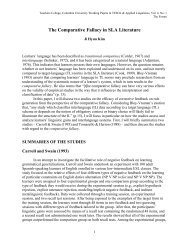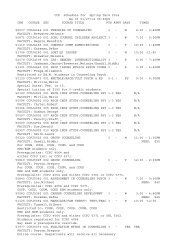UNICEF Mongolia - Teachers College Columbia University
UNICEF Mongolia - Teachers College Columbia University
UNICEF Mongolia - Teachers College Columbia University
You also want an ePaper? Increase the reach of your titles
YUMPU automatically turns print PDFs into web optimized ePapers that Google loves.
CHAPTER 1: INTRODUCTION<br />
three types of schools: city schools, aimag-center schools (province-center schools), and soum-center<br />
schools (district-center schools). The data collecon instruments were piloted in April, and the main<br />
study was carried out from late April unl mid-June. Two schools (Kheni aimag and Ulaanbaatar) could<br />
not be visited due to bad ming (e.g. during the absence of the principal or during the exam period), so<br />
it was decided not to include those two schools in the database. As a result, the database includes 28<br />
schools: nine city schools (Ulaanbaatar, Erdenet), eight aimag-center schools, and eleven soum-center<br />
schools.<br />
We interviewed all available educaon managers of the 28 schools. Typically, large schools have an<br />
educaon manager for the primary grades and another for the lower and upper secondary grades.<br />
Extremely large schools further divide educaon management by lower and upper secondary schools<br />
and/or by subject departments. There were in total 35 educaon managers who were available for an<br />
interview at the day of the visit. In schools that employ more than one educaon manager, we interviewed<br />
all educaon managers who were available on the day of the visit.<br />
In each school we requested to interview five teachers using purposeful sampling. Thus, we asked<br />
the principal or the educaon manager to help us schedule interviews with two young teachers, two<br />
old teachers, and one teacher in the medium age range. In some cases, the teachers filled out the<br />
quesonnaires on their own, and in a few cases, we conducted in-depth interviews with the teachers<br />
using the same quesonnaire/interview guide. Aer the visit to the first four schools in Kheni aimag<br />
and the first two schools in Ulaanbaatar, we redesigned a few of the items in the teacher quesonnaire<br />
by replacing open-ended quesons with closed-ended quesons. In total, 123 teacher quesonnaires<br />
were entered into an SPSS database. Those quesonnaires that were based on the first version (with a<br />
greater proporon of open-ended quesons) were not entered into the SPSS database, but they were<br />
used nevertheless for analysis and interpretaon.<br />
In four of the five aimags, we were also able to interview the directors or deputy-directors of the<br />
Educaon and Culture Departments. We also met with two representaves of the Capital City Educaon<br />
Department. The map (see Figure 4) with the research sites is presented on the following page. Also, the<br />
two standardized quesonnaires for our interviews with teachers and educaon managers are listed in<br />
Appendices 1 and 2.<br />
1<br />
2<br />
3<br />
4<br />
5<br />
6<br />
TEACHERS IN MONGOLIA: AN EMPIRICAL STUDY ON RECRUITMENT INTO TEACHING,<br />
PROFESSIONAL DEVELOPMENT, AND RETENTION OF TEACHERS<br />
25



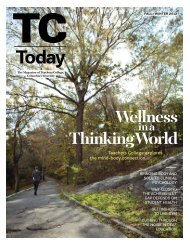

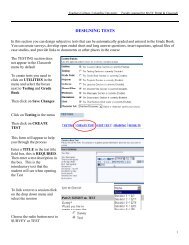


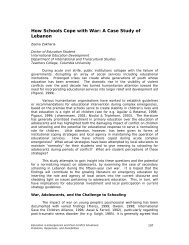
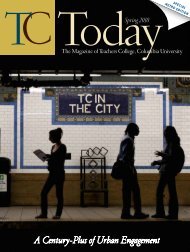
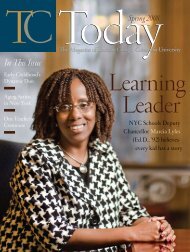
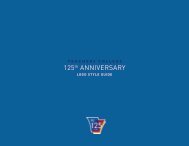


![TC Tod[...].pdf - Teachers College Columbia University](https://img.yumpu.com/27074883/1/190x252/tc-todpdf-teachers-college-columbia-university.jpg?quality=85)

